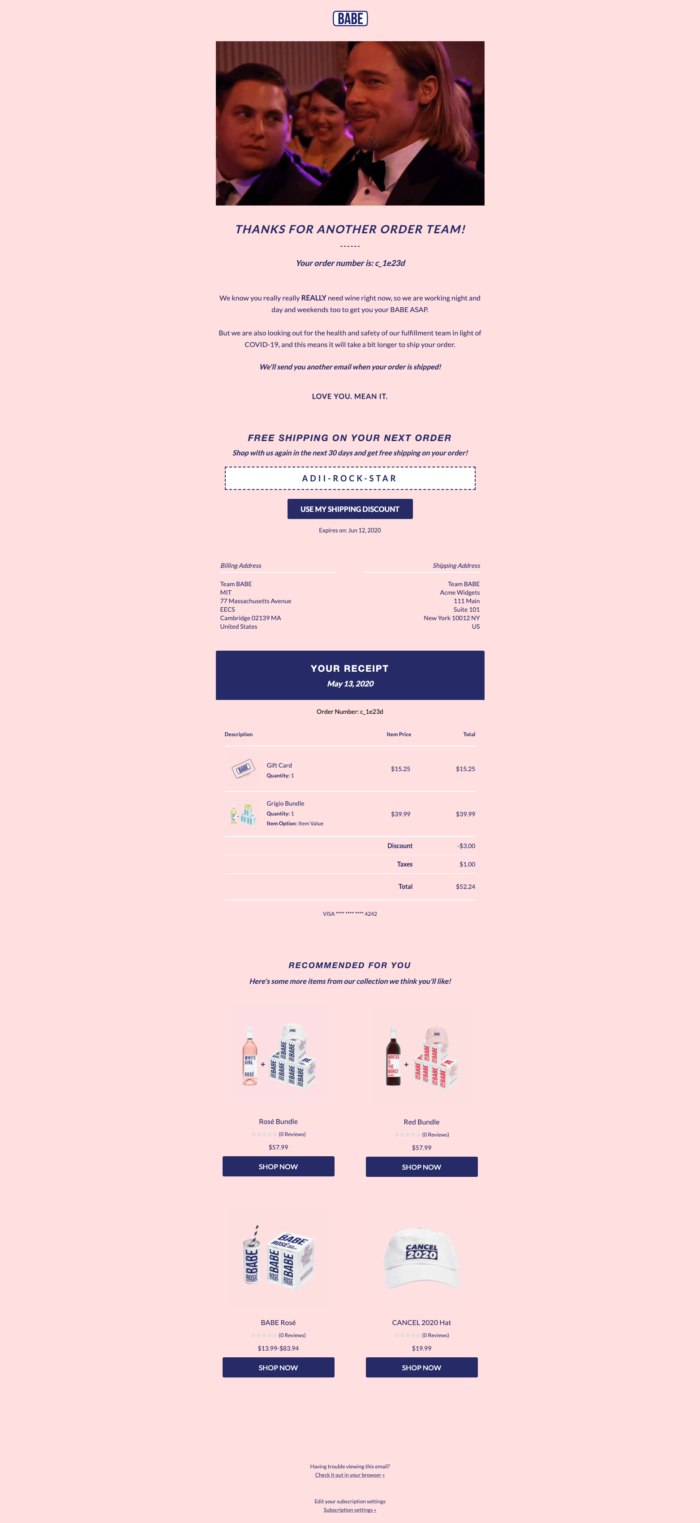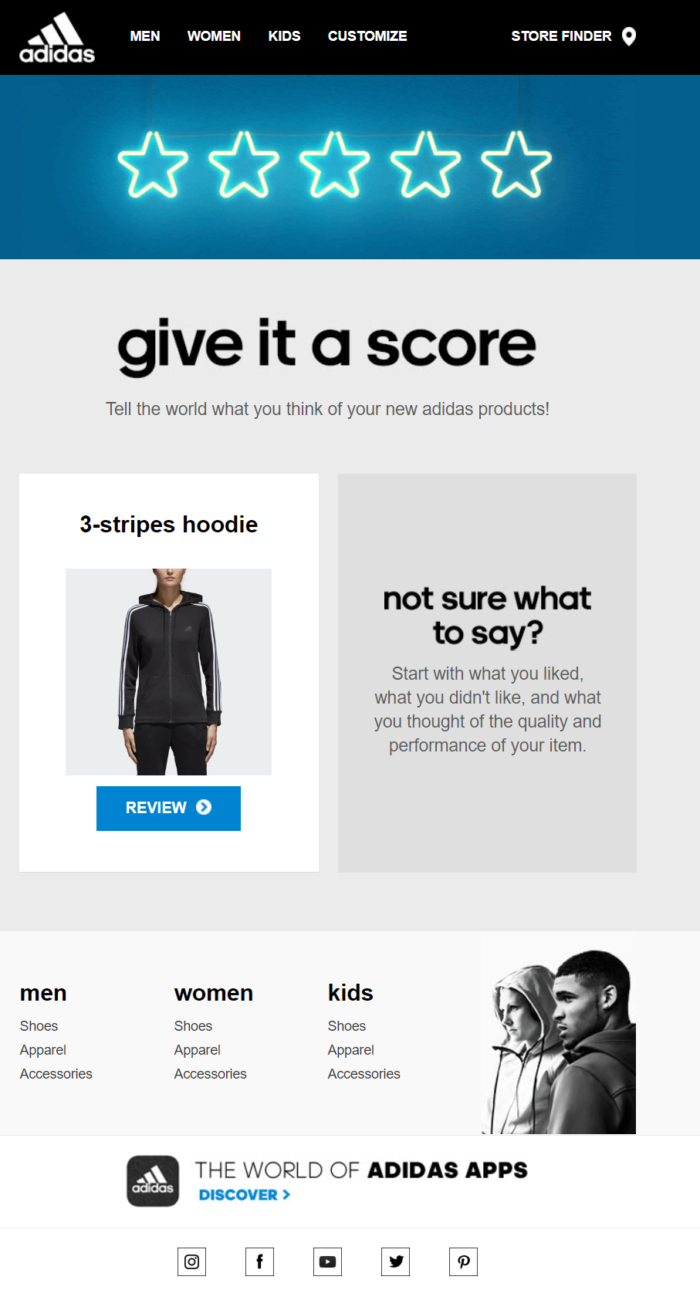How to Build a Marketing Stack for Your Ecommerce Store
When running an ecommerce operation, your success depends on your ability to optimize the digital experience.
Eighty-five percent of people say they’re willing to dismiss a brand that doesn’t personalize the first point of contact.
Unfortunately, only 20% of brands are running successful personalization strategies.
By building the right marketing stack for your ecommerce store, you can optimize the experience for your customers. From a seamless checkout process and personalized recommendations to timely email marketing, your marketing stack is the secret to ecommerce success.
Read on to discover the basics of building a marketing stack for your ecommerce store, as well as some tools and tips for creating your ecommerce marketing stack.
What is a marketing stack for ecommerce?
In general terms, a marketing stack is a group of technologies.
Technology is naturally decentralized. You need different pieces of tech and software to complete different tasks. Overall, your marketing stack should optimize the digital experience for both yourself and your customers.
As you build your marketing stack for your ecommerce store, you’ll want tools that integrate well with each other. Most personalization strategies fail due to poor data, so integration is key to success here.
Ideally, your marketing stack should complement your audience, products, and tech team.
8 necessary tools for building your marketing stack for your ecommerce store
Building a marketing stack for your ecommerce store is all about choosing the right tools. Some tools you won’t need and others will be 100% essential. It completely depends on your store and audience.
Take a look at the list below and see which ones fit best for your store.
1. Personalization engine for product recommendations
Your customers demand personalization—whether they acknowledge it or not. A personalization engine can help you provide the perfect products to them at the ideal time.
Instead of forcing customers to search through products and discover things on their own, a personalization engine can help them make choices.
As an ecommerce store, this is especially important because you rely on an optimal digital experience to reach the right people at the right time. It’ll recommend the perfect products at the ideal time, depending on what they viewed while on your site.
See how CM Commerce customer BABE sent personalized product recommendations after the subscriber made a purchase on the site?

This is a receipt for a returning customer and includes recommendations (powered by our recommendation algorithm which considers historic browsing behavior + past purchases) specific to this customer.
2. Advanced analytics
If you want to track how your visitors behave on your site, you’ll need advanced tracking analytics. Advanced tracking analytics tell you which products your customers view and for how long. You can also monitor your blog and other pieces of content on your site to improve.
How long did people view your lead magnets? Which blog posts are most popular? Which pages lead to conversions?
You can also use advanced analytics to send personalized email campaigns. For example, let’s say a customer viewed specific products on your site. You could use automation to send them an email with personalized product recommendations.
3. Automated email marketing
Did you know 59% of people prefer email marketing over other communications? Give them something to talk about with email marketing.
Email makes it easy to provide relevant communications with your audience at the right time.
You don’t have to fight against algorithms. Instead, email gives you a direct line of communication with your audience.
As a tool for building your marketing stack for your ecommerce store, email provides powerful automation. You can design campaigns ahead of time for things like:
- Welcoming new subscribers
- Educating with personalized newsletters
- Abandoned cart recovery
- Browsing product reminders
Plus, email allows you to segment your audience based on unique factors like
- Age
- Geolocation
- Browsing behavior
- Purchases
With these pieces of information, you can learn about your audience and provide them with relevant content.
People prefer email because they’re in control of the relationship. If they don’t like what a brand sends, customers can simply unsubscribe. Social media advertisements don’t offer that luxury.
You can also prevent abandonment with relevant emails:

4. Integrated user-generated content
Almost everyone who visits your website is going to look for reviews. Ninety-one percent of people read reviews before making a purchase decision. To top it off, 84% of people consider online reviews as valuable as a personal recommendation.
Put your reviews to work by integrating them into your marketing tech stack. Find tech to embed your reviews and user-generated photos into your emails, product pages, and blog posts.
User-generated content like reviews and photos help customers feel confident in their purchase decisions. Ultimately, user-generated content helps people build relationships with your store by proxy.
People spend the equivalent of an entire day online each week. Displaying user-generated content like photos can help the internet feel a little less lonely.
5. Reward program technology
According to the 20/80 rule, 20% of your customers will make up 80% of your business’s revenue. As an ecommerce store, your entire livelihood hinges on the digital experience you provide.
Treat your best customers right with reward or loyalty programs.
Of course, loyalty programs aren’t exclusive to ecommerce. However, they give customers that added incentive to shop with you over all the other choices out there.
While building your marketing stack for your ecommerce store, a rewards tool is essential—especially in industries with razor-thin margins or high competition.
6. Smart search features
Your success as an ecommerce store depends on your digital experience. It’s essential for visitors to find items as quickly as possible, even products they didn’t know they needed.
Smart search tools in your marketing tech stack improve the browsing experience for customers.
A smart search tool integrates data from a visitor’s browsing or purchase behavior to recommend relevant products. Plus, it helps customers find what they need as fast as possible.
Click fatigue is common and going through the checkout process already puts a lot of the burden on consumers. Why not make it as easy as possible to find and select products on your site?
Look how Thrive Market asks questions about shopping behavior to guide their product recommendations:

7. Social media scheduling
It’s not a question of whether you’ll have a social media presence, but how and where. Coming up with relevant content every week is tedious enough. Let automation take control as much as you can.
Tools like Hootsuite or MeetEdgar can help you post on a regular schedule with minimal effort.
Plus, social media tools offer their own analytics, so you can see things like
- Which posts perform best
- What content your audience likes
- Which posts aren’t big hits
Tools like MeetEdgar also use machine learning to pull quotes from within your content. In other words, they make it easier to consistently post awesome content on social media.
8. Review and feedback collection
Reputation is everything with ecommerce. If you want to show off reviews, you first must collect them.
Generating reviews and feedback can feel like you’re losing an uphill battle. At the end of the day, you’re asking customers to complete a task for free.
You can’t offer any incentive—like coupons—for reviews and feedback. However, you can remind customers about the greater good. People are naturally compelled to help others. Remind customers that reviews help other people like themselves make educated decisions.
This is where the right marketing tools come in handy. You want to meet customers where they’re at. Since 69% of consumers prefer contacting brands though email post-purchase, tools like CM Commerce can help you capitalize on that. Use technology to ask for feedback inside your transactional emails.
Be sure to consider the customer’s state of mind as well.
How long does it take to familiarize yourself with a product? Can someone write an informed review right away or do they need a few days to lean into your products?
Time your emails to go out at the perfect time like Adidas did here:

Building your marketing stack for your ecommerce store: Things to consider
Before you throw money at a bunch of tools you may not need, think about a few things.
Your audience
Consider the needs of your audience before you start building your marketing stack for your ecommerce store. What kind of personalized experience would your audience want? Do they want virtual fittings or unique recommendations?
Your products
Consider which marking technologies would fit with your products. Do you need to help your audience find clothing seamlessly or search through vinyl? Your marketing tech stack should make it easier to browse your products and help your audience find what they want.
Your goals
At the end of the day, what are the goals for your ecommerce store? Do you want to become the largest fish in the pond or simply be the person who best meets the needs of customers?
Consider tools for your marketing tech stack that meet both current and future goals.
Wrap up
Building your marketing stack for your ecommerce store is vital to hooking and retaining customers. Depending on your audience, you may want to build a marketing stack with:
- Personalization engines
- Advanced analytics
- Smart search features
- Social media scheduling
- Rewards programs
- User-generated content
Need help automating your ecommerce store? Check out the full range of features from CM Commerce.